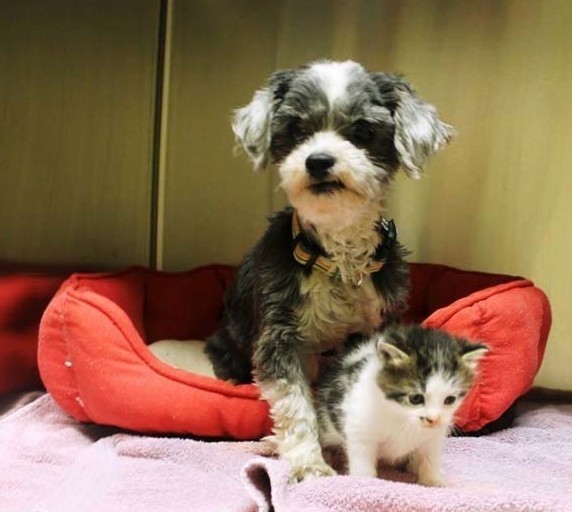
Stuck on you!
August 24, 2021
Tornadoes: Keeping Pets Safe
August 29, 2021No money could save my cat

Twelve years ago, my girlfriend told me she wanted a cat, and we traipsed through animal shelters until I saw this beautiful, white, frightened creature, huddled in the back of a metal cage until she was given a hand to snuggle with.
We named her Bonny, after the Scottish folk song we sang to get her to creep out from under the couch or down from the tiny, filthy space above the fridge. I’ve never felt so close to an animal. Bonny would sit near me while I wrote, close her eyes and purr at the sound of my voice, and follow me around the house. My girlfriend, now my wife, would joke that I’d stayed with her to be with the cat.
When we had children, Bonny taught them. My son, as a toddler, adored the cat, and when she meowed at him for being too rough he would cry. Yet the same cat walked over to my baby daughter before she could crawl and let her clasp at tufts of fur. She helped us learn to be a family.
I think that’s what pets are for. A pet is not a person, even if our hearts sometimes tell us different. But the way we relate to animals is an expression of our humanity.
One of the reasons we have pets is because they let us learn about the challenging parts of life – birth, love, arguments, illness, death – in a way that is very real, and very emotional, but far safer than when there is a human life involved.
As cats do, Bonny got sick very suddenly. At her last vet visit she’d been ten pounds, but it seemed as if in a week she’d dropped to six. When I took her in for an exam, the vet took her blood, gave her IV fluids, which led to a brief resurgence, and sent us home with highly caloric food that Bon ate for only a day or so.
It was the weekend, and while watching my daughter’s swim lesson I got an urgent call: Bonny’s levels of the liver product bilirubin were ten times the upper limit of normal. She needed an ultrasound, fast.
I came home and picked Bonny up from my son’s bed, where she had taken to sleeping. I interrupted my kids and my wife to have them say goodbye. It was the first time she didn’t resist being put in the bag. At the vet, Bonny was literally scared to death, limp and flat against the steel examination table.
A veterinary assistant brought me an itemized estimate of what it would cost to treat her: at least a few days in the animal hospital while they tried to get her to eat or fed her with a tube. It would cost at least $2,500, perhaps a thousand or two more.
I worried about whether I was worrying about Bonny or just being cheap. I called my wife. “Of course we’ll do this for her,” she said. They took Bonny off for an ultrasound. I paid the $2,500 in advance.
But the ultrasound showed a liver covered with dark spots, more consistent with cancer than the bright, reflective fatty liver that would have been caused by self-starvation. The vet wanted to take two liver biopsies; I talked him down to one. I said goodbye to Bonny, and promised her we would all visit the next day.
A few hours later, the phone rang. It was the vet. His voice was calm in the way a voice can only be when it is staying cool because something is wrong. Bonny had taken a turn for the worse as soon as the biopsy needle went in. Her blood pressure had dropped, her heart rate slowed.
They were trying to revive her. If it came to that, should they do CPR?
I imagined my little cat with broken ribs. No, of course not. She passed away while I was on the phone.
The next day I went to the veterinary hospital and collected a $1,500 refund for services not rendered. I was angry.
Three-thousand dollars didn’t seem like too much to keep Bonny, but a grand seemed way too much to pay to have her die in what I could only imagine was the worst possible way. Her poor cat brain must have felt entirely abandoned by the people she trusted.
In a book by UCLA cardiologist Barbara Natterson-Horowitz I read about how animals can have heart attacks purely from fear. I’ll always wonder if that was what happened to Bon.
Can a cat be literally scared to death?
Exerpt of an article by Matthew Herper found at: forbes.com







